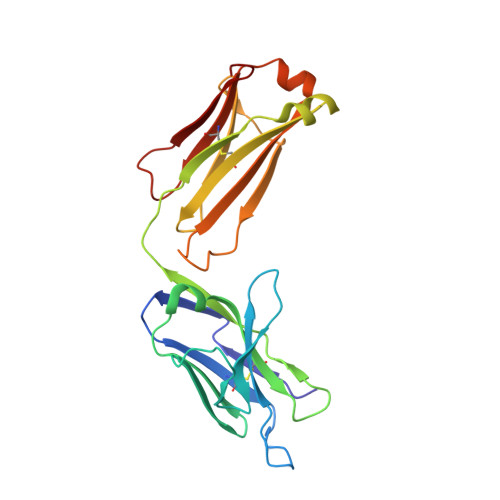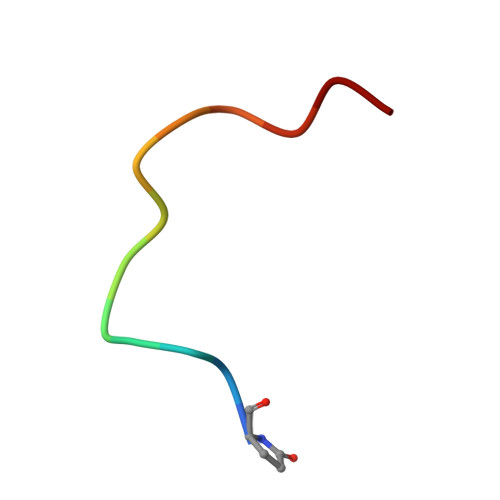Molecular recognition of structurally disordered Pro/Ala-rich sequences (PAS) by antibodies involves an Ala residue at the hot spot of the epitope.
Schilz, J., Binder, U., Friedrich, L., Gebauer, M., Lutz, C., Schlapschy, M., Schiefner, A., Skerra, A.(2021) J Mol Biology 433: 167113-167113
- PubMed: 34161780
- DOI: https://doi.org/10.1016/j.jmb.2021.167113
- Primary Citation of Related Structures:
7O2Z, 7O30, 7O31, 7O33 - PubMed Abstract:
Pro/Ala-rich sequences (PAS) are polypeptides that were developed as a biological alternative to poly-ethylene glycol (PEG) to generate biopharmaceuticals with extended plasma half-life. Like PEG, PAS polypeptides are conformationally disordered and show high solubility in water. Devoid of any charged or prominent hydrophobic side chains, these biosynthetic polymers represent an extreme case of intrinsically disordered proteins. Despite lack of immunogenicity of PAS tags in numerous animal studies we now succeeded in generating monoclonal antibodies (MAbs) against three different PAS versions. To this end, mice were immunized with a PAS#1, P/A#1 or APSA 40mer peptide conjugated to keyhole limpet hemocyanin as highly immunogenic carrier protein. In each case, one MAb with high binding activity and specificity towards a particular PAS motif was obtained. The apparent affinity was strongly dependent on the avidity effect and most pronounced for the bivalent MAb when interacting with a long PAS repeat. X-ray structural analysis of four representative anti-PAS Fab fragments in complex with their cognate PAS epitope peptides revealed interactions dominated by hydrogen bond networks involving the peptide backbone as well as multiple Van der Waals contacts arising from intimate shape complementarity. Surprisingly, Ala, the L-amino acid with the smallest side chain, emerged as a crucial feature for epitope recognition, contributing specific contacts at the center of the paratope in several anti-PAS complexes. Apart from these insights into how antibodies can recognize feature-less peptides without secondary structure, the MAbs characterized in this study offer valuable reagents for the preclinical and clinical development of PASylated biologics.
- Lehrstuhl für Biologische Chemie, Technische Universität München, Emil-Erlenmeyer-Forum 5, 85354 Freising, Germany.
Organizational Affiliation:



















